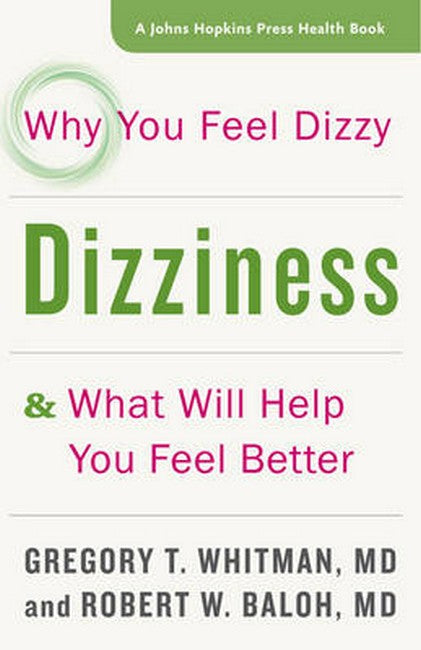Anyone who has experienced the sensation of the room spinning around or the lightheadedness that signals an impending faint knows how bad it feels to be dizzy. Almost any medical condition can cause dizziness, but the most common include benign paroxysmal positional vertigo, transient drops in blood pressure, migraine, and anxiety. Inner ear disorders that cause dizziness are often associated with abnormal eye movementsin fact, it's possible to diagnose an acute inner ear infection in five seconds, just by looking at a person's eyes. In Dizziness, Drs. Gregory T. Whitman and Robert W. Baloh explore the different conditions that can cause dizziness, describe the types of dizziness they see most frequently, and explain what people with dizziness can do to feel better.
A detailed look at one of the most commonand complexmedical complaints, Dizziness distills Drs. Whitman and Baloh's six decades of combined experience into a short and practical guide. Packed with useful tips on diagnosis and treatment, Dizziness reveals how top doctors analyze dizziness, including the problems with balance and walking that go along with it. The book also explains the importance of overcoming dizziness and describes what people who are dizzy can do to get an accurate diagnosis.
Combining background on specific forms of dizziness with descriptions of optimal treatments for each one, Dizziness covers everything from conditions that cause dizziness when a person changes position (such as benign paroxysmal positional vertigo and orthostatic hypotension) to conditions that cause dizzy spells without warning or trigger (such as Ménière's disease and migraine-associated dizziness). The book explores bouts of dizziness that last for days, as well as constant dizziness that lasts for weeks, months, or even years. Enhanced with patient stories and rounded out by a glossary of terms and an appendix describing home exercises, this is the go-to book for anyone who struggles with dizziness.

